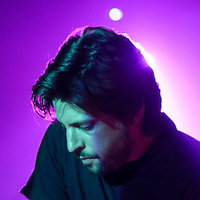On solitude and community
Prelude
Justine Kurland (born in Warsaw, New York, 1969) received a BFA from the School of Visual Arts and an MFA from Yale University. Her work is in the public collections of the Whitney Museum of American Art, Guggenheim Museum, and International Center of Photography, New York, among other institutions. Her monograph Highway Kind was published by Aperture in 2016. Girl Pictures, her now-iconic series of images of teenage girls, taken between 1997 and 2002 on the road in the American wilderness, was published by Aperture in May 2020.
Conversation
On solitude and community
Photographer Justine Kurland on revisiting past work, forging space you can occupy, how a photograph makes something real, and notions of utopia.
As told to Amanda Jane Robinson, 2999 words.
Tags: Photography, Process, Inspiration, Beginnings, Identity.
Why did you decide now was the time to collate your images of teenage girls into a book?
It was pretty random. I published that last book Highway Kind, my father died, there was a whole sequence of events—maybe a kind of midlife crisis—that made me feel like maybe I’ve grown out of the idea of the American road trip. Really, what is that legacy, except a form of colonialism. That idea of early pioneers pushing westward, it’s not like no one was there when they got there.
Four years ago I gave up on my road trips. I mean I’m not just conveniently being conscious about it right now. The truth of it is the 20 years that I spent on the road was the happiest part of my life. But I just turned 50 this year, my kid’s in high school, I teach now, I had more financial responsibilities that I had to take care of. So I just renounced that path.
After that happened, my girlfriend was at my house and she saw one of my Kodak boxes labeled “Girl Pictures” and asked to look inside. I was a little bit embarrassed of that work, the way that you would be embarrassed of a middle school picture, because the work is so heartfelt and earnest and yearning towards this utopic… I don’t know. But she convinced me to show it with my gallery, and I had a show two years ago that got a lot of attention and that’s when Aperture approached me to do this book.
The last body of work I made on the road was published in a book called Highway Kind by Aperture. It’s a bizarre part of the story, but when that book was published, it was released the day that Trump was elected for President. And now my second book with Aperture, this older body of work, the Girl Pictures, is coming right in the kind of height of COVID-19. So I feel like it’s very bad luck for me to make books. It’s like catastrophe is meant to strike if I make a book. [laughs]
What do you think it was about the idea of the teen girl runaway that appealed to you?
So when I made that work, it was 20 years ago, I’d just learned how to drive. I was 30 years old and I think I had a certain nostalgia for thinking about my own lost childhood. But really the catalyst of that work, I was dating a man at the time who had a daughter, Alyssum. I didn’t have an air conditioner, I was dating him mostly for his air conditioner, and it just happened that his daughter was living there that summer. So we would spend the days together when he was at work and conceived this project kind of as a bonding experience. She was having a really rough time, so the fantasy of running away—which thinking back probably wasn’t the most responsible adult thing to encourage, but I think all the adults in her life were yelling at her to get it together—she was really happy to meet someone who was like, “Yeah, it’d be so great if we could both run away, I want to run away, too.”
I started making these pictures really narrative, like I brought her to bus stations, the most cliché tropes of what that teenage runaway would look like. They were really bad pictures. There’s only one photograph from that time in the whole book, her sitting in the cherry blossom tree.
After her, the first girl in the book is Lily who I write about in the essay in the book. She’s the one getting her hair braided by her sister, Jo, in front of the Toys R Us. She was the babysitter of my teacher at Yale, Laurie Simmons, so she was Lena Dunham’s babysitter. She very sadly died of a heroin overdose. There was a whole kind of range of different backgrounds that these girls come from, and Lily was probably one of most privileged; she went to private school, she had these awesome parents. And she developed a heroin habit and had cleaned up, and I guess did it one last time and didn’t have a tolerance anymore. I think that happens fairly frequently. The whole idea of this series was to have this imaginary place of protection for these girls. So to think about Lilly as one of my main characters who kind of appears through the book, who I stayed in touch with well after I had stopped making the pictures, that she had such a tragic fate feels like a real failure of the project. There is no protection. She was such a wonderful force of joy, such a beautiful person. So that was a sad story.
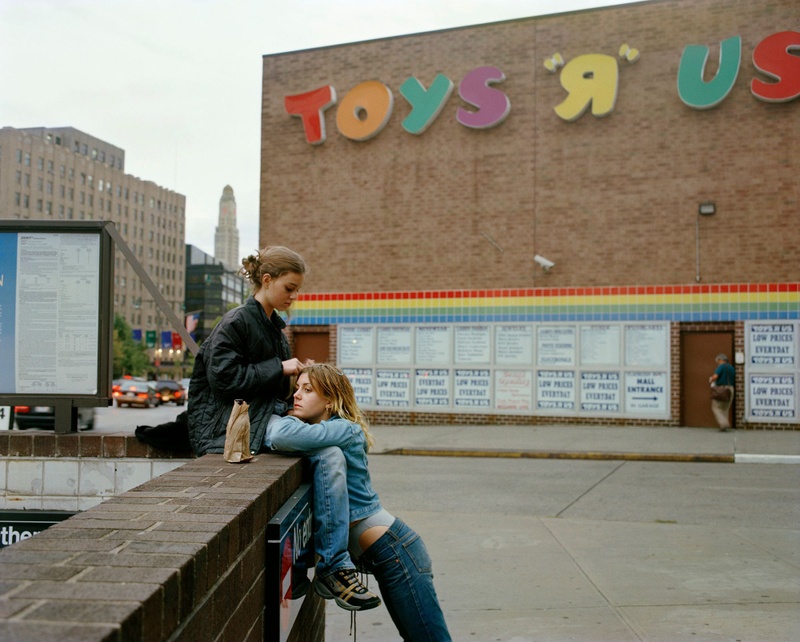
Toys R Us, 1998.© Justine Kurland.
But when I got out of grad school, I started going on these long road trips across America. It’s crazy to think that these girls would get in a car with me and that I had that kind of hubris that I thought it would be okay to just like go up to kids. Now that I have a 15 year old, I can’t imagine someone telling my kid to get in the car with them and drive to some out of the way location, that would never happen nowadays. I would get the person arrested, probably. But I just thought it was cool, and the girls thought it was a good idea, and we just did it. I would drive into a town, I would cruise around where the high school was, I probably smelled bad, I had like wadded up like fast food in my car. I probably seemed kind of crazy, but there you go. There are certain things that you do as a younger person because there’s this sense of possibility in the world, and those pictures are certainly about that spirit of possibility that these girls are going to forge this community together and find a place of their own. That’s one of the things about being young. I hate that word freedom, but there’s something that they’re impervious to through this kind of idea of youth. And that narrative is so much embedded in American mythology, I made a whole bunch of teenage girl pictures in New Zealand after I made the ones in America and they were very different.
How did you come to make work in New Zealand?
I was invited for a residency there. The pictures I made in New Zealand were just within a few hours, I didn’t travel around New Zealand the way I traveled around America. I think the story of the teenage girl runaway is such a specifically American story, where in New Zealand when I was making those pictures, I was trying to tap into some other type of narrative. I was thinking of Picnic At Hanging Rock, that these school girls were seduced into this wilderness, that the uniforms were like the last vestige of civilization.
To think about what it would really be, to be a teenage runaway, would suck so badly. There are other tragic stories about people who come from really hard backgrounds, who run away because it’s unlivable to stay at home, but that’s not what the work was really about. It was more of this imagining where these girls would end up going if they all got there together. And so then it ends up being like these weird hippy communes in the woods with girls swimming in lakes and braiding each other’s hair and making fires and forts and stuff. For me the idea of making a photograph is to be able to make something true through photographing it, to prove that this alternate fantasy life is real because it’s part of all of the other images that we’re navigating through. But now I shrink from saying that because of what it has come to mean in the last four years. It’s interesting because Trump has kind of ruined everything.
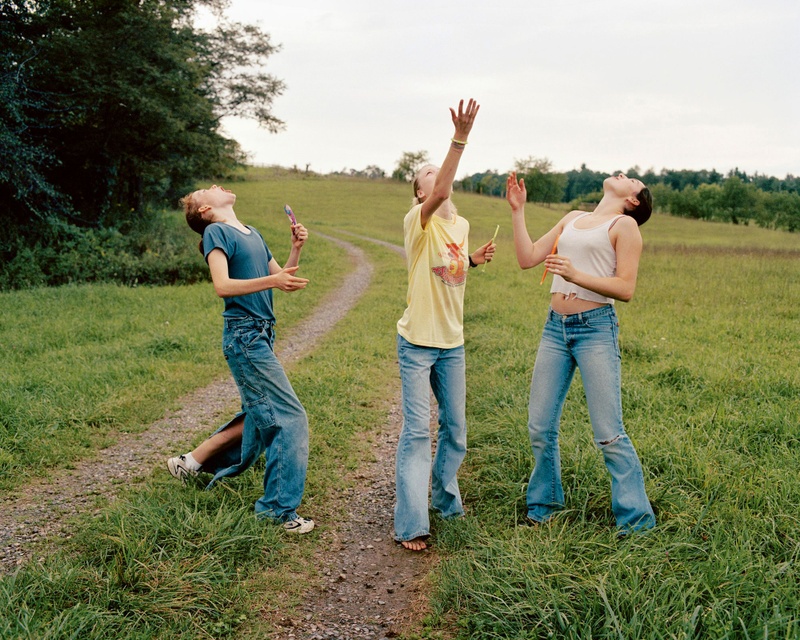
Candy Toss, 2000. © Justine Kurland.
You mentioned that you hate the word freedom, is that for the same sort of reason?
Yeah, it’s like one of those vaporous words that changes depending on who’s using it. Trump’s nationalist, flag-thumping idea of freedom is part of the rhetoric of the United States in a way that makes me squeamish, so I just try to use a different word so that it’s not tied to the ways that all these other people end up using the word. I mean, the idea behind it is probably one of the things I value most.
I wrote an essay talking about how Thoreau is maybe the only philosopher taught in American high schools. And there’s something about his idea of self-sufficiency that is a right wing idea. I mean he’s not right wing, but it’s this libertarian idea, that it’s just about the self and not about community. I’m really drawn to that idea of Thoreauen self-sufficiency that was part of living in a van. I really liked the van, it was tricked out, it was perfect. I had hardwood floors in it. I had beautiful sheets with 800 thread count Egyptian cotton. It was heaven in there, a nest. But I think that there is something about that kind of isolationism that is fucked up, we need each other.
And certainly with the Girl Pictures, I tried to get as many girls as possible jammed into each picture, because I wanted to imagine an idea of community in solidarity, and thinking about girls becoming stronger with other girls. But I think that I have this ambivalence because I really just wanted to be left alone, I really enjoyed my own solitude.
Who do you have conversations with about your work other than your subjects?
My girlfriend, who picked the box of “Girl Pictures.” She has her own gallery in New York City called Higher Pictures with a very radical program. We talk about photography a lot. And I teach photography so I have a bunch of really amazing students. I do have conversations with my colleagues and peers, but I think that artists are pretty careful. You don’t want to pat yourself on the back or you don’t want to feel like you’re kissing someone’s ass. People are really sensitive about their work, so there’s a tiptoeing around it. There are people that I’ll talk to or show my work to, but I have to like, buy them a bottle of wine and take them out to dinner first.
What surprises you about teaching?
I’m surprised how much I enjoy it. I’ve been doing it now for a while, for the last seven or eight years, pretty full time. It is so amazing to be able to go and talk to people who are excited about the same things I am. I learn a lot from them. They turn me on to things that I don’t know about and it’s so exciting when I’m showing them things they groove on as well. So there’s that shared conversation.
You’ve said that you first picked up a camera because this girl you had a crush on took pictures, have there been other times in your life where infatuation has been like a motivating force creatively?
Well, I think one of the things about the Girl Pictures that is so interesting looking back now is to see how homoerotic all that work is. I was dating boys at that time and I was totally unaware of it, so there is that motivation for sure.
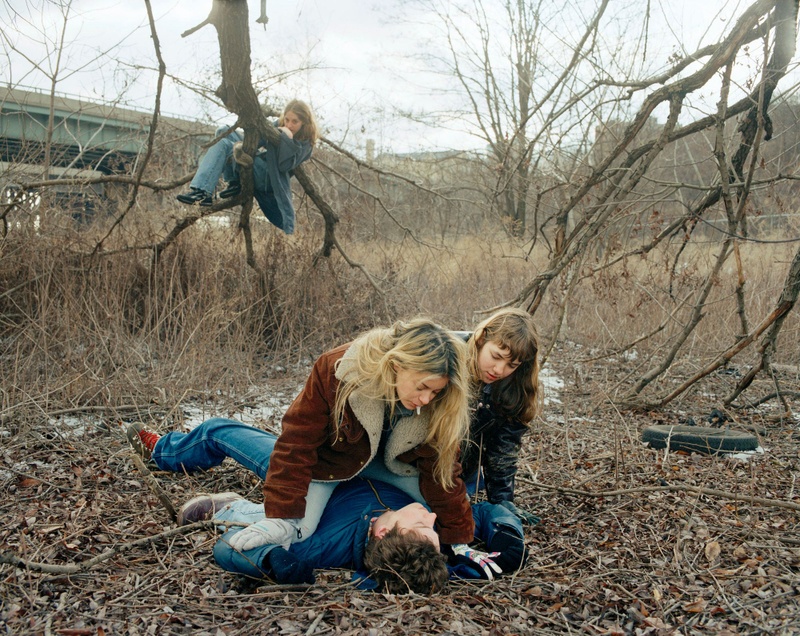
Boy Torture: Two-Headed Monster, 1999. © Justine Kurland
Do you feel, in your work since, that queerness has informed that in some way?
Totally. After I sold my van I started making these very sexually explicit photographs of lovers and friends, and then I’m interweaving those pictures together with pictures from my hometown. I grew up in this very white trashy industrial town. And then putting those with pictures of my mother. I think there’s more of that I’m exploring in my work now than I have previously.
How do you know when a series is done?
I think that there is a lessening of attention. Sometimes when a series is done I still make a few extra pictures where I’m still kind of batting the dead mouse around and sometimes those are where the best pictures get me because I’m not trying as hard, or I’m more open-minded to let other things come into the picture. That’s what happened with one of my favorite pictures in the book, the one where everyone’s in the sand and they’re making out. I actually ended up dating one of the girls in this picture afterwards.
When you start a series, do you always feel the need to finish it?
Well, I guess I don’t really have a dead set idea of what makes a start and a finish, I just work on stuff for a while, obsessively even. And then I start working on something else. They transition into each other. It’s hard to even know where one begins and the other one starts.
But the work I’m making now was a real drawing of a line in the sand. I’m working in black and white, I changed all of these things about the ways I made work, because I wanted to do an about face. I was thinking about publishing Girl Pictures as the end of a cycle. I feel like in a weird way Highway Kind and Girl Pictures are coupled, nested inside of each other. They’re all about this idea of driving and finding this sense of possibility on the road. There’s other work in between those two series that I did while I was driving, but they were a smoother transition. It’s this trajectory about the road that comes to a crashing halt at the end of the last body of work that I did with the car pictures in Highway Kind. The last pictures in that book are these mangled cars that have torn up and crashed on the road.
What is your relationship with social media?
I’m a different generation, I only do Instagram, I don’t do anything else. I have a Facebook account, but I never even look at it, it’s not even on my phone. I love Instagram, just because I love photographs, and definitely like if I’m waiting in line or something, there’s many times in the day that I’ll look at it. But other than that, it’s not that big for me. I need my students to tell me about new platforms that are constantly bubbling up that I don’t know about.
It’s interesting because these girls in the book,I don’t think I could make pictures like this today because everyone would be on their phones. There’s a different way of posing that has all to do with that constant circulation of like making your own picture, being in control of your own image, and then this kind of diva thing that goes along with that, and then sending it out into the world through your own platforms.
That early Petra Collins sort of thing, girls in their bedrooms on their phones. I know you two are often compared, does that comparison resonate with you?
That work is actually really different from my work. I’m looking at this idea of what it is to find community, to be in nature, and to have solidarity. I’m looking back at the people that I love like Barbara Hammer, and when I think of Petra Collins, I think of her more as part of the trajectory of Nan Goldin, like a certain type of beautiful loser narcissistic loop. They’re incredible pictures, it’s not to say anything wrong with the pictures, but I think that the ideology behind them or the kind of motivation is different. I know that sometimes this work gets compared to Petra Collins. There’s a lot of work about teenage girls. There might be certain connections of subject matter but I think that the way the subject matter is used, I don’t see it the same way.
What has your work taught you about yourself?
One of my answers when I was asked why I make work, and I thought this sounded so good that I said it over and over, is that the only reason to make work is to know yourself and to be known by others. But to actually qualify that statement, getting called on that: It’s like a whole other conversation between me and my therapist, or something.
There are certain themes that keep re-emerging in my work that have to do with what it is to be together with others, what it is to create community in home, what it is to have attachments to people, what it is to have a sense of belonging, what it is to forge some space that you can occupy. All of those things end up coming up in one way or another. It’s like whack-a-mole, or something—they just keep popping up.
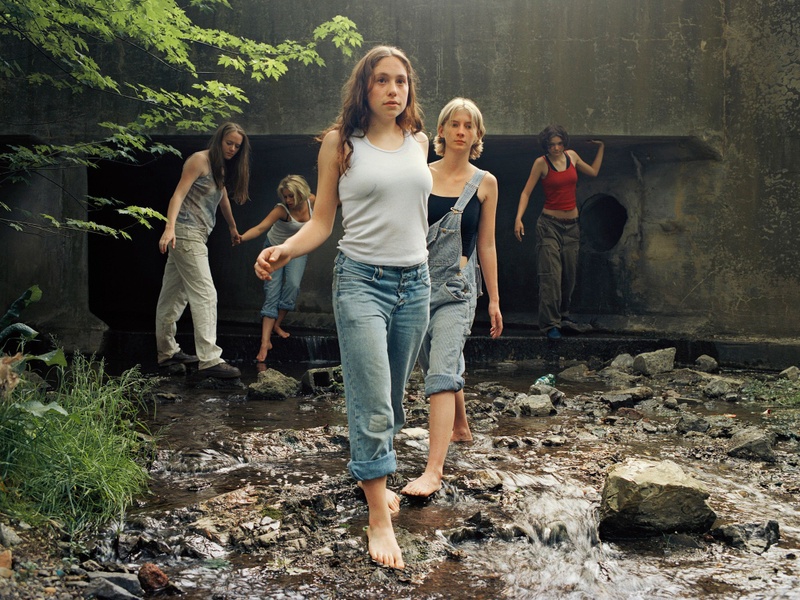
The Wall, 2000. © Justine Kurland.
- Name
- Justine Kurland
- Vocation
- Photographer
Some Things
Pagination

